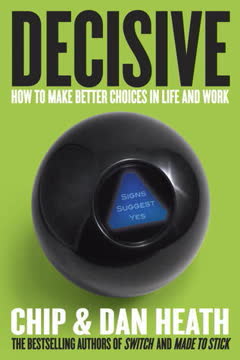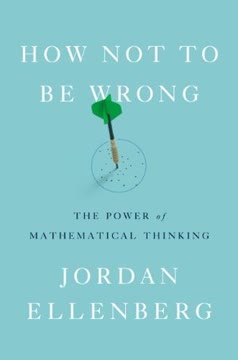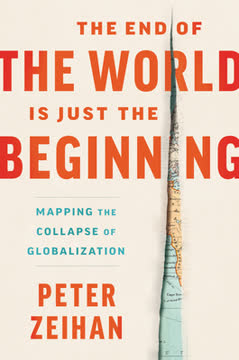Key Takeaways
1. Foresight is a learned skill, not an innate ability
"What appears our doomed fate is, in reality, a choice."
Cultural practices matter. The famous "marshmallow test" experiments on children's ability to delay gratification were misinterpreted as showing innate differences. In reality, a child's environment and cultural background strongly influence their ability to wait for larger rewards. For example, children from Cameroon showed much higher rates of delaying gratification compared to German children, likely due to different cultural practices and expectations.
Foresight can be cultivated. Through conscious effort and the right environmental cues, individuals and organizations can improve their ability to think ahead and make better long-term decisions. This involves:
- Creating cultural norms that value future thinking
- Designing environments that reduce immediate temptations
- Practicing techniques like mental time travel and scenario planning
- Learning from historical examples of both foresight and shortsightedness
2. Imagination is crucial for envisioning and preparing for the future
"We need scenarios where the future looks better than either now or the past—not simply the same or worse—based on actions we take."
Vivid mental imagery motivates action. Research shows that when people can vividly imagine future scenarios, they are more likely to take preparatory actions. For example:
- Virtual reality simulations of aged versions of oneself increase retirement savings
- Detailed visualizations of climate change impacts motivate environmental action
- Role-playing future scenarios helps organizations plan for potential risks
Cultivate future thinking. Individuals and organizations can boost their ability to envision the future through practices like:
- Writing letters to future selves or descendants
- Creating anchors to the future (e.g., planting trees, starting long-term projects)
- Using technologies like VR to simulate future experiences
- Allowing time for mind-wandering and scenario generation
- Practicing "prospective hindsight" - imagining looking back from the future
3. Immediate rewards can incentivize long-term thinking
"We can find ways to make what's best for us over time pay off in the present."
The "glitter bomb" approach. Creating immediate, tangible rewards for choices that benefit the long-term future can help overcome our tendency for short-term thinking. Examples include:
- Prize-linked savings accounts that combine lottery-like excitement with responsible saving
- Businesses applying long-term research insights to solve immediate challenges
- Offering tax rebates for disaster preparedness measures
- Pairing carbon taxes with citizen dividend checks
Design for the long-term. Organizations and policymakers should look for creative ways to align immediate incentives with long-term goals:
- Reward CEOs for long-term company performance, not just quarterly earnings
- Create investment vehicles that combine fast and slow-return opportunities
- Offer immediate benefits for choices that protect shared resources (e.g., sustainable fishing practices)
- Use gamification to make future-oriented behaviors more engaging in the present
4. Metrics often mislead: Look beyond short-term targets
"Dashboard driving, because we careen forward glued to gauges of speed or fuel levels, not realizing meanwhile that we may be steering off a cliff."
The dangers of myopic metrics. Focusing solely on easily measurable short-term targets often leads to poor long-term outcomes. Examples include:
- Standardized test scores undermining broader educational goals
- Quarterly earnings targets causing companies to sacrifice R&D and long-term investments
- Loan repayment rates masking unsustainable microfinance practices
- GDP growth concealing environmental degradation and inequality
Strategies for better measurement:
- Use multiple metrics to capture different aspects of performance
- Look at trends over longer time periods, not just snapshots
- Regularly question whether current metrics align with ultimate goals
- Create proxies for hard-to-measure long-term outcomes
- Implement "North Star" practices to regularly reorient to long-term vision
- Give teams slack and autonomy to pursue long-term innovations
5. Institutions and culture shape our ability to plan ahead
"We need practices that cajole decision makers to heed consequences for the future of humanity."
Institutional design matters. The rules, norms, and structures of our organizations and societies profoundly influence our ability to think and act for the long-term. Examples of institutions that encourage foresight:
- Catch-share programs for sustainable fisheries management
- Independent central banks insulated from short-term political pressures
- UNESCO World Heritage Site designations
- The U.S. National Park Service
Cultural shifts for foresight:
- Create ombudsmen or committees to represent future generations in policymaking
- Reform corporate governance to reduce pressure for short-term profits
- Design financial regulations to encourage longer-term investing
- Build intergenerational connections through education and community programs
- Cultivate cultural narratives that emphasize our role as stewards for the future
6. Games and simulations help us inhabit potential futures
"Games occupy a distinct sphere between fiction and reality, Perla contends, and open up the possibility for people to suspend their disbelief about certain future scenarios."
The power of play. Games and simulations allow people to experience and emotionally engage with potential future scenarios in ways that abstract planning cannot. Benefits include:
- Creating psychological stress that mimics real decision-making pressures
- Allowing exploration of multiple scenarios and outcomes
- Building empathy for future selves and generations
- Revealing hidden assumptions and biases in planning
Examples of impactful games:
- War games shaping military strategy (e.g., anticipating WWII Pacific theater)
- Climate change role-playing games for community planning
- Business simulations exploring potential market disruptions
- Public health games modeling pandemic responses
- Financial planning games increasing retirement savings
7. We must become better ancestors to future generations
"We need to think and act as ancestors."
The heirloom mindset. Viewing ourselves as both ancestors and descendants can shift our perspective on long-term decisions. This involves:
- Treating shared resources (natural and cultural) as collective heirlooms
- Focusing on proximate generations we can relate to, not distant abstract futures
- Passing down not just objects, but knowledge, values, and stewardship practices
Strategies for better ancestorship:
- Create legal frameworks recognizing rights of future generations
- Design institutions with century-scale missions and governance
- Cultivate cultural practices that connect past, present, and future
- Reframe climate action and other long-term challenges in terms of legacy
- Use stories and rituals to make the future more emotionally salient
- Build flexibility into long-term plans, allowing future generations options
Human Qualities: This book challenges us to expand our imagination, cultivate patience, and develop a sense of responsibility that extends beyond our own lifetimes. It calls for a radical optimism – not blind faith that things will work out, but a belief in our collective ability to shape a better future through conscious effort and wise institution-building.
Human Experiences: The author draws on a wide range of human experiences to illustrate these concepts, from ancient civilizations to modern financial markets, from small fishing villages to global climate negotiations. This diversity of examples reinforces the universal nature of the challenge we face in thinking long-term, while also highlighting the many creative ways different cultures and individuals have risen to that challenge.
</instructions>
Last updated:
FAQ
1. What is The Optimist's Telescope by Bina Venkataraman about?
- Explores foresight and recklessness: The book investigates why individuals, organizations, and societies often ignore future consequences and make reckless decisions, even when warnings are clear.
- Examines barriers to long-term thinking: It delves into psychological, cultural, and institutional obstacles that prevent us from planning ahead in a world obsessed with immediacy.
- Offers practical strategies: Through research, stories, and case studies, Venkataraman provides actionable methods to cultivate patience, imagination, and better decision-making for the future.
- Emphasizes intergenerational responsibility: The book advocates for stewardship of resources and legacies as "shared heirlooms" to be passed responsibly to future generations.
2. Why should I read The Optimist's Telescope by Bina Venkataraman?
- Understand human myopia: The book reveals the psychological and social reasons behind why people and societies often ignore future risks, helping readers recognize these patterns in themselves and others.
- Connects personal and societal challenges: It links individual decision-making with large-scale issues like climate change, public health, and economic stability, showing how short-term thinking exacerbates these problems.
- Provides actionable lessons: Readers gain practical strategies—from personal rituals to institutional reforms—to help cultivate foresight and patience in various contexts.
- Offers a hopeful perspective: Despite the challenges, Venkataraman highlights examples of successful long-term thinking, inspiring readers to become better ancestors and stewards of the future.
3. What are the key takeaways from The Optimist's Telescope by Bina Venkataraman?
- Foresight is a skill: The ability to think ahead is not innate but can be cultivated through specific strategies and environmental changes.
- Short-termism is pervasive: Both individuals and institutions are prone to focus on immediate rewards, often at the expense of long-term well-being.
- Cultural and institutional change is possible: By redesigning norms, laws, and incentives, societies can foster more future-oriented thinking.
- Imagination and memory matter: Vividly imagining future scenarios and learning from history are crucial for motivating better decisions and avoiding repeated mistakes.
4. What is the concept of "foresight" in The Optimist's Telescope by Bina Venkataraman?
- Definition of foresight: Foresight is the judgment to make smart choices about the future by weighing what we know and don’t know, preparing for multiple possibilities rather than just predicting outcomes.
- Difference from prediction: Unlike prediction, which tries to forecast exact results, foresight involves imagining scenarios and acting on behalf of our future selves and communities.
- Role of imagination: The book emphasizes that foresight relies on "mental time travel"—using memories and imagination to simulate future events, which motivates present actions.
- Practical application: Foresight can be strengthened through tools like scenario planning, role-play, and environmental cues.
5. What psychological factors contribute to reckless decisions, according to The Optimist's Telescope by Bina Venkataraman?
- Present bias and instant gratification: Humans tend to overvalue immediate rewards and undervalue future benefits, leading to impulsive decisions.
- System 1 vs. System 2 thinking: People default to fast, emotional "system 1" thinking, which favors short-term gains, while the more effortful "system 2" thinking needed for foresight is less frequently engaged.
- Limbic system influence: The brain’s limbic system governs emotional responses like fear and craving, often overriding rational caution about future consequences.
- Loss aversion: People fear losses more than they value equivalent gains, which can distort decision-making and reinforce short-termism.
6. How do culture and environment affect our ability to think ahead in The Optimist's Telescope by Bina Venkataraman?
- Cultural norms shape patience: Studies show that children’s ability to delay gratification varies widely across cultures, indicating that environment and social expectations influence foresight.
- Instant gratification culture: Modern society’s emphasis on speed, convenience, and immediate results undermines long-term thinking by constantly rewarding quick fixes.
- Countercultural practices: Subcultures and rituals, such as professional poker or Montessori education, are highlighted as models for fostering patience and strategic thinking.
- Environmental cues: Adjusting choice architecture and reducing sensory temptations can help individuals and groups make more future-oriented decisions.
7. What practical methods and strategies does The Optimist's Telescope by Bina Venkataraman offer to improve foresight?
- If/then planning: Anticipating future temptations and pre-deciding responses helps people resist impulsive decisions and stay aligned with long-term goals.
- Rituals and imagination aids: Practices like writing letters to future selves or using virtual reality to simulate future scenarios make abstract futures more tangible and emotionally salient.
- Environmental nudges: Designing choice architectures—such as default options or social norm feedback—can cue people toward future-oriented decisions without restricting freedom.
- Creating immediate rewards: Programs like prize-linked savings use short-term incentives to motivate behaviors that have long-term benefits.
8. How do organizations and institutions contribute to or mitigate recklessness, according to The Optimist's Telescope by Bina Venkataraman?
- Myopic metrics problem: Organizations often focus on short-term numeric targets (e.g., quarterly earnings), which can incentivize reckless behavior and mask underlying risks.
- Stewardship and norms: Successful interventions include stewardship teams, public commitments, and peer comparisons that align individual actions with collective foresight.
- Legal and governance reforms: The book advocates for legal frameworks like trusts, benefit corporations, and public trust doctrines to promote long-term stewardship.
- Corporate examples: Firms like Amazon and Eagle Capital Management demonstrate how resisting short-term pressures and focusing on long-term metrics can yield better outcomes.
9. What is the "dashboard driving" metaphor in The Optimist's Telescope by Bina Venkataraman, and why is it important?
- Definition of dashboard driving: This metaphor describes how people and organizations fixate on easily measurable, short-term indicators (like a car’s speedometer) while neglecting the broader context and long-term consequences.
- Consequences of myopic focus: Such focus can lead to decisions that seem successful in the short term but steer individuals or companies toward failure or crisis over time.
- Solutions offered: The book suggests tuning out distracting short-term metrics, setting multiple measures of progress, and binding oneself to future-oriented commitments to avoid reckless steering.
- Illustrative examples: Cases like the microfinance crisis in India and New York cabdrivers’ earnings targets exemplify the dangers of dashboard driving.
10. How does The Optimist's Telescope by Bina Venkataraman explain the failure to prepare for long-term risks and disasters?
- Imagination gap: People often fail to vividly imagine the concrete consequences of disasters, making warnings feel abstract or unlikely.
- Optimism and denial: There is a tendency to filter information to align with hopeful beliefs, reinforced by past near-misses that breed complacency.
- Social and institutional factors: Government bailouts, insurance policies, and cultural norms can discourage preparedness, making recklessness a systemic issue.
- Historical amnesia: Societies often forget or ignore historical lessons, leading to repeated mistakes like building in floodplains or underestimating climate change.
11. What are some examples of successful long-term thinking and foresight in The Optimist's Telescope by Bina Venkataraman?
- Baja California Sur lobster fishery: Fishing cooperatives manage lobster stocks as a shared heirloom, collaborating across communities to sustain the resource for future generations.
- Catch shares in fisheries: Aligning individual incentives with long-term resource health transformed overfishing into stewardship, demonstrating how policy and collective action can foster foresight.
- Biomedical research megafunds: Innovative financial models combine high-risk, long-term investments with short-term returns to fund breakthrough medical therapies.
- Legal victories for precaution: Cases like Richland County’s defense against risky floodplain development show how communities can use law to protect future safety.
12. What are the best quotes from The Optimist's Telescope by Bina Venkataraman and what do they mean?
- “Even giants stumble and fall.” This line reminds us that great civilizations, like individuals, can fail due to recklessness and ignoring warning signs.
- “It is the illusion of what we might become that draws people to Las Vegas.” This highlights how the allure of future possibilities, even if unlikely, motivates present behavior—a theme explored through prize-linked savings and innovation prizes.
- “We are not powerless. What I once believed was inevitable about human nature is rather the result of decisions we have made in the past.” This quote encapsulates the book’s hopeful message that foresight and better choices are within our reach.
- “Each generation serves as an heirloom’s steward, imbuing it with its own meaning, while carrying forth its tradition.” This reflects the vision of intergenerational responsibility and the importance of shared cultural and natural legacies.
Review Summary
The Optimist's Telescope receives mixed reviews, with ratings ranging from 1 to 5 stars. Readers appreciate the book's exploration of long-term thinking and decision-making, praising its well-researched examples and important message. However, some criticize its organization, repetitiveness, and lack of actionable advice. The book covers topics like personal finance, corporate strategy, and societal challenges. While some find it insightful and thought-provoking, others feel it lacks depth or clear structure. Overall, reviewers agree on the significance of the topic but differ on the book's effectiveness in addressing it.
Similar Books










Download PDF
Download EPUB
.epub digital book format is ideal for reading ebooks on phones, tablets, and e-readers.




